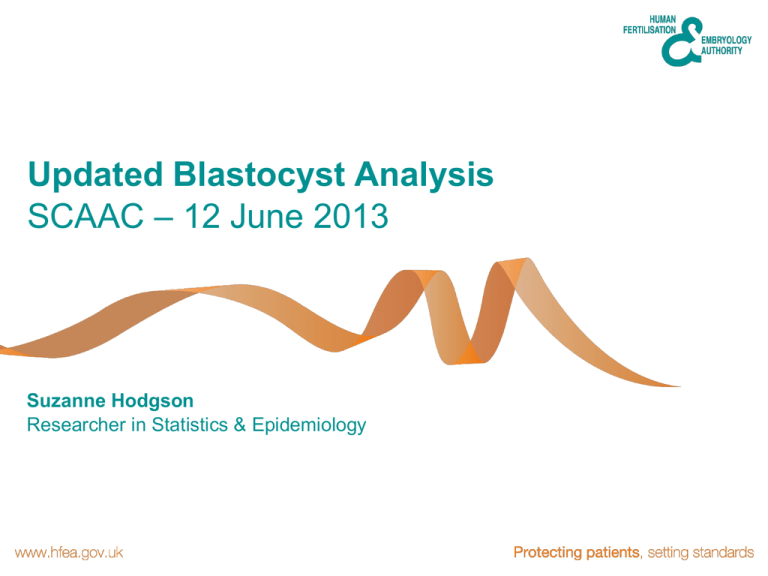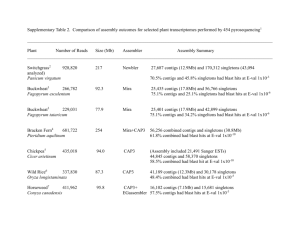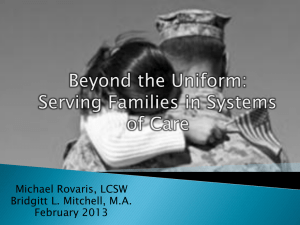
Updated Blastocyst Analysis
SCAAC – 12 June 2013
Suzanne Hodgson
Researcher in Statistics & Epidemiology
Introduction
• Two years ago we looked at benefits and risks of blastocyst
transfers, compared with cleavage stage transfers
• Areas of concern were success rates, monozygotic twinning,
gestation & birth weight, abnormalities and the sex ratio.
• At the time data was up to 2008, now 2010 for births 2011 for
pregnancies
Last time we saw..
There was some evidence that:
pregnancy and birth rates are higher for BTs than CTs
DBT has very high MB rates, blastocysts may result in more MZ
twins;
the sex ratio is skewed in favour of males, particularly after
eSET
There did not seem to be evidence that:
there is a difference in birth weight
there is a difference in gestation
Change over time
• Then: BTs were a relatively new procedure in the UK, but
growing.
• 7% in 2006, 12% in 2008 and in 2010 blastocysts formed nearly
a quarter of all embryo transfers
• 2012/3 – over 40%, and still with a steady upward trend.
Changes in embryo stage at transfer
2008 to June 2012
Pregnancies and birth
Must take great care comparing CT and BT success rates – they
are likely to be different types of patient.
Cleavage:
pregnancy rate per transfer 28.2% (2011)
live birth per transfer 25.8% (2010)
Blastocyst:
pregnancy rate per transfer 46.3% (2011)
live birth per transfer 41.4% (2010)
Age specific live birth rates per ET
2010
Age specific pregnancy rates per ET
2011
Multiple births
• Overall in 2010, 20.1% of live births after CTs were of two
or three babies, and 19.9% after BTs.
• High multiple birth rate after double BTs – 34.8%
compared with 24.6% after DCTs.
• In women under 35 this is even more pronounced, 40.0%
of births are multiples after DBT
Monozygotic twins
• Few outcomes annually so data has been aggregated over 2
years
• There is much variation year to year
• Can only count where babies born is greater than embryos
transferred
Cleavage
Blastocyst
2 babies from SET
24/2,451
49/2,965
3 babies from DET
24/12,946
45/4,394
Total (%)
48/15,398 (0.3%)
94/7,362 (1.3%)
Gestation
No significant difference between CT and BT for singletons or twins
Birth weight - singletons
• Initially singletons only
• Cleavage mean birthweight:
3,247g (CI:3,231 – 3,264g)
• Blastocyst mean birthweight:
3,237g (CI: 3,256– 3,259g)
• As before, not statistically significantly different
Birth weight - multiples
• Multiples may have very different birth weights but same
gestation
• Looked at whether one or more babies were of low birth weight
(<2,500g)
• Very similar proportions after CT, 69.8% and BT, 68.9%
• Similar to that seen last time, and around the same as the NPEU
analysis 2006 (66%)
Congenital abnormities
• Abnormalities are recorded in live births, still births, terminations
& miscarriages.
• For babies born alive, 2010 saw 773 congenital abnormalities, 27
uncertain
• RR for 2010: 0.49 (95% CI: 0.41 – 0.57)
• RR for aggregated 2009 & 10: 0.39 (95% CI: 0.34 – 0.44)
• Apparent reduction in risk after BT.
Sex ratio (2008)
Male
Female
All births (ONS)
51
49
BT overall
54
46
CT overall
50
50
BT singletons
55
45
CT singletons
51
49
eSBT
57
43
eSCT
46
54
Sex ratio (2010)
Male
Female
All births (ONS)
51
49
BT overall
52
48
CT overall
50
50
BT singletons
53
47
CT singletons
50
50
eSBT
52
48
eSCT
51
49
Conclusions
The proportion of embryos transferred at blastocyst stage continues
to increase, now nearly half.
We now have more evidence that:
success rates are higher for BTs than CTs
blastocysts may result in more MZ twins; DBT has very high MB
rates
There does not seem to be evidence that:
there is a difference in birthweight or gestation
There is less evidence of:
skewing of the sex ratio
Thank you.
Contact:
Suzanne.Hodgson@hfea.gov.uk












